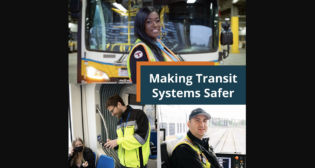
LRT Growth Continues, But at Restricted Speed (UPDATED With Commentary)
Written by David Peter Alan, Contributing Editor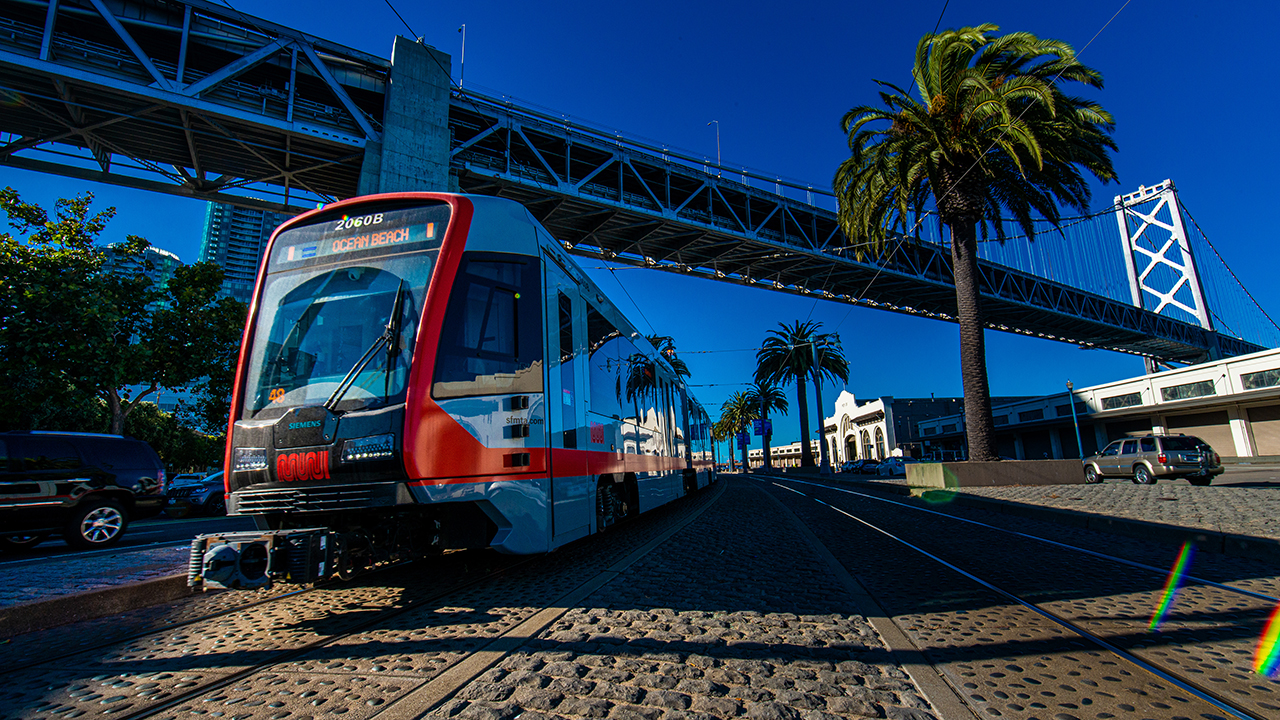
The S200, designated as an LRV4 by the San Francisco Municipal Transportation Agency (Muni), is a high-floor LRV manufactured by Siemens Mobility in Florin, Calif. The S200 succeeds the SD-100, SD-160, SD-400 and SD-460 as the high-floor version of Siemens LRVs for North America, and is being manufactured and marketed with the low-floor S700.
RAILWAY AGE, NOVEMBER 2022 ISSUE: Light rail was a transit phenomenon like none other since the advent of the streetcar itself. A transit mode that burst onto the scene four decades ago, it brought rail transit to dozens of locations in the U.S. and Canada that had lost it during the mid-20th century. It deserves credit for revitalizing urban neighborhoods and central business districts, re-establishing rail transit as an important component of mobility and economic development. It accomplished all that despite having a title that virtually none of its riders understood, and without an agreed-upon definition or taxonomy.
LRT has grown and prospered in California, despite a requirement that every proposed transit project that uses public funds must garner two-thirds voter support. It has brought rail transit to other regions like the Pacific Northwest and the Inter-Mountain West, while enhancing it elsewhere. It has also popped up as a novelty in some places, and as a major trunk line in others, fed by bus lines rerouted and rescheduled for that purpose.
Despite that success, LRT has never reached some major cities that once hosted significant streetcar networks. It has never made appearances in New York, Chicago, Vancouver or Montreal, although such a line, the BQX, has been proposed for New York’s outer boroughs of Brooklyn and Queens.
LRT has hit a yellow signal in recent years. Growth continues, but at restricted speed. Some systems are extending existing lines, and there are still a few new starts under construction, but the future of this mode, which was once highly touted as the driving force behind a transit renaissance, may be in doubt. We will look at that future, but first we need to examine the past and present.
After Streetcars, Before LRT
There is an apocryphal story that pinpoints the demise of much of the nation’s former rail transit network to Cleveland in 1922. The story goes that General Motors Chairman Alfred P. Sloan saw crowds of workers boarding streetcars in downtown Cleveland to head home from their offices. He then decided to declare his personal “culture war” on rail transit and establish the primacy, if not the exclusivity, of the automobile as the way to go places in America. His campaign was stunningly successful, not only for destroying almost the entire rail transit network in the nation, but also for establishing “automobile culture” and “highway culture” as they exist today.
Rail transit reached its nadir at the halfway point between that day and this. Outside of a smattering of service elsewhere, legacy “commuter rail” systems existed in the Boston, New York (including New Jersey), Philadelphia and Chicago areas. All of them were in trouble and continue to run today, only because public agencies were eventually formed to keep them going. Canadian systems in Montreal and Toronto had similar experiences. Only a few American cities had “metro style” subway and elevated lines: Boston (MBTA’s Red, Blue and Orange lines), New York, Philadelphia and Chicago. The legacy PATH system connected northern New Jersey with Manhattan, while the newly expanded PATCO Line connected South Jersey with Philadelphia. Toronto’s TTC started its subway in 1954, and Montreal had started its system in time for Expo 67, a fair that celebrated Canada’s 1967 centennial.
Only seven American cities still had streetcars. Newark and New Orleans were down to one line each. Cleveland and Pittsburgh had two. Boston, Philadelphia and San Francisco still had a number of lines that diverged from downtown. Toronto was the only Canadian city that still had a streetcar system, and it was (and still is) the most robust in North America.
Dawn of LRT
There was modest growth in the American rail-transit network during the 1970s, but the new starts used metro-style trains. Metro Rail (WMATA) in the Washington, D.C. area; BART in San Francisco and the East Bay; and MARTA in and near Atlanta started during that decade. Single lines in Baltimore and Miami (where a one-stop spur to the airport was added later) started in the 1980s.
Against this backdrop, LRT popped onto the scene. It started as a single line on the Edmonton Transit System in Alberta in 1978. Not to be outdone, Calgary followed suit in 1981. The San Diego Trolley also began operations that year, the first such system in the U.S. By the end of the decade, there were light rail lines in Buffalo, Portland, Sacramento and San José. There were no new “modern streetcar” lines yet, but vintage cars on McKinney Avenue in Dallas started running in 1989.
If any decade can be considered the “Golden Age” of LRT, it was the 1990s. During that time, new systems opened in Baltimore, Dallas, Denver, Los Angeles, St. Louis, Sacramento, New Jersey and Salt Lake City.
Perhaps LRT’s biggest success story occurred in Los Angeles. When I first visited there in 1979, there was no rail transit at all—only a sparse and slow bus system. Hollywood Boulevard was still a tourist destination, but downtown appeared dead; its historic and iconic buildings were seemingly a reminder of past glory that would never return. Yet, it did return. Today, office buildings, theaters and other civic institutions have been revitalized. Other buildings have been converted to apartments. Metrorail, with its LRT and subway, along with enhanced bus service, brought downtown back to life. The same thing is happening in other places, like Santa Monica. There is more rail transit coming to the City of Angels, too, including LRT. The first segment of the Crenshaw Line (K Line) opened Oct. 7, and the agency has unveiled plans to add more new rail lines and expand others by 2050.
Denver’s Regional Transportation District (RTD) FasTracks program is doing the same thing for the Mile High City and nearby towns with both LRT and electric multiple-unit (EMU) main line trains. Transit in Dallas is a major success story, too. The Dallas Area Rapid Transit (DART) system consists of four lines that run through downtown Dallas on streets where no other vehicles are allowed, and radiate to suburbs that were served by interurban streetcars a century ago. There is also a modern streetcar line that runs separately from DART, along with heritage streetcars on McKinney Avenue (the M-Line). Rail transit has also expanded beyond DART’s service area through connecting lines: the Denton County A-Train; TEXRail in Fort Worth and nearby towns; and Trinity Railway Express (TRE) trains, which run between Dallas and Fort Worth with conventional commuter rail equipment. The Utah Transit Authority’s TRAX LRT system now consists of three major lines, and there is also a modern streetcar line, running with slightly smaller cars. Complimenting TRAX is FrontRunner, a conventional train between Ogden and Provo, running with commuter rail equipment.
LRT growth has slowed considerably this century. Since 2000, there have been fewer new starts, most with single lines, and modern streetcars have made their appearance.
METRORail in Houston was the last three-line system to begin operations, starting in 2004. Metro in Minneapolis and St. Paul also has two lines, and so does Charlotte (CATS), where one of the lines started as a short streetcar line. In Seattle, Tacoma and Phoenix, there is only one rail line, but there are plans to expand all of them.
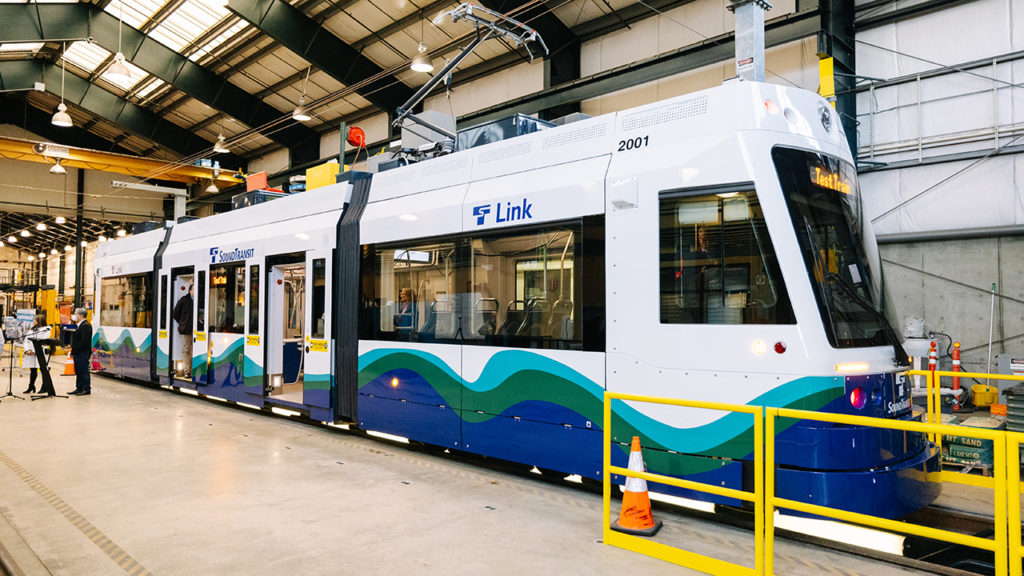
Brookville Equipment Corporation is a U.S. manufacturer specializing in streetcars and light rail vehicles. The Liberty® NXT Streetcar is the second evolution of Brookville’s flagship Liberty Modern Streetcar platform. “Designed and manufactured by an American carbuilder for American operators,” the Liberty NXT, doubling as an LRV, features more than 70% low-floor standing area, station-level easy boarding through an automatic load-leveling system, modifiable couplers, and anticlimber heights designed for enhanced interoperability with existing streetcar and LRV fleets. In addition, an optional battery onboard energy-storage system (OESS) provides off-wire capabilities. The Liberty NXT is designed in compliance with ASME RT-1 standards for streetcar vehicles and California Public Utilities Commission (CPUC) buff strength requirements, while also complying with Buy America requirements of 70% or greater U.S. content. It features a crashworthy design with energy-absorbing carbody equipment, and flexible interior amenities such as bike racks, wheelchair seating, etc. These cars also feature a three-section carbody, connected by two articulation joints, accommodating 40 seated passengers, with the ability to transport 120 passengers comfortably.
Streetcars have returned, too, mostly of the “modern” variety. Two such lines in Portland compliment the MAX LRT system. Two such lines in Seattle are disconnected, and it will take several years to fill the gap between them. Several cities have a single streetcar line: Cincinnati, Detroit, Kansas City, Milwaukee, Oklahoma City (with a second line running limited service), Tucson, and Washington, D.C. The most recent start was this past May in Tempe, Ariz., connecting with Valley Metro from Phoenix. There are hopes and plans to expand many of these lines, but none are being implemented.
Heritage streetcars have found a niche market, too. In New Orleans, Perley Thomas streetcars from 1923 still run a full-service schedule on St. Charles Avenue. Other lines in the city run cars with modern workings and a heritage look, built in-house around and shortly after 2000, and designed by local streetcar legend Elmer VonDullen. New Orleans residents would never refer to their lines as “LRT” or their cars as “trolleys”; the only acceptable name is “streetcar.” San Francisco has vintage cars, too, running full service on Market Street. So does Memphis, running on Main Street and two other lines. There are also heritage streetcar lines in El Paso; Tampa; Little Rock; and Kenosha, Wisc. Those lines run on limited schedules as tourist attractions and, although it is fun to ride them, they do not serve as full-time transit. Sadly, the El Paso Streetcar, using restored PCC cars that once ran in the city during their previous incarnation, was planned as a full-time line and operated only briefly as such.
Diversity of Operations
It is difficult to fathom that vintage streetcars or newer cars built with a heritage look would bear the designation “LRT”; at least the riders would not call them that. There are other operations that might bear that name, an inaccuracy, since those lines run on railroads where freight trains also operate. They include the A-Train in Denton County, Tex.; Capitol Metro Rail in Austin; Sprinter in northern San Diego County; South Jersey’s River LINE between Trenton and Camden on New Jersey Transit; and TEXRail in the Fort Worth area. TEXRail specifically calls itself a “commuter rail” line.
There is no wider diversity of LRT operations than on NJT, which runs three systems that differ greatly among themselves, while also being completely different from the agency’s commuter rail operations. The oldest continuous operation is Newark Light Rail, most of which was known as the Newark City Subway from 1935 until 2001, when it ran with PCC cars. It was the sole survivor of the vast streetcar network that Public Service Coordinated Transport once ran. That route is longer today than it was then, and the current vehicles are longer and articulated, with three or four sections. The Hudson-Bergen Light Rail Transit (HBLRT) system consists of three lines that serve Hudson County, including Hoboken, Jersey City and Bayonne. The first segment opened in 2000, the base fare is higher than on NJT’s other LRT and bus lines, and parts of the system run on separate lanes in the streets of Jersey City or on historic right-of-way of the Central Railroad of New Jersey. The River LINE runs with diesel multiple-unit (DMU) equipment, mostly on the historic Camden & Amboy, which first ran in the 1830s, was later part of the Pennsylvania Railroad, and is now a portion of Conrail Shared Assets. The River LINE has a unique extended temporal separation arrangement with Conrail that benefits LRT and freight operations. It’s described in detail in former General Manager Alfred E. Fazio’s book, Elements of Planning, Engineering & Operating Light Rail, With Applications in New Jersey, published by Simmons-Boardman Books.
Just What is LRT?
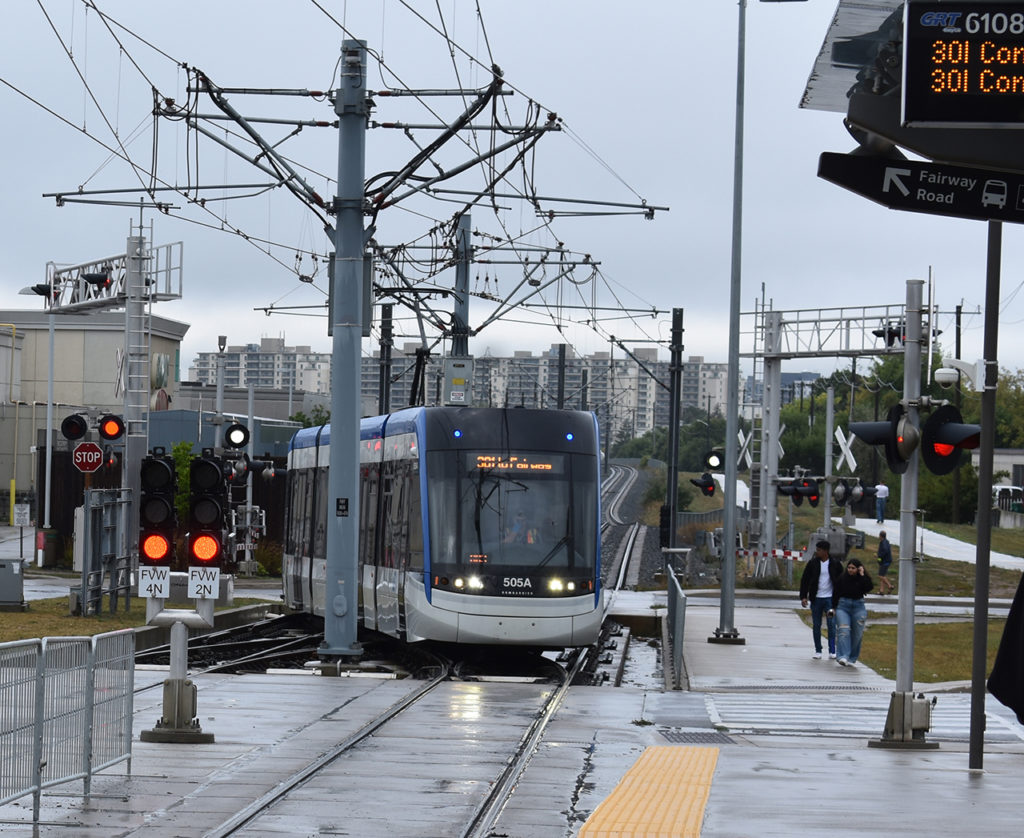
Alstom Flexity Freedom LRV approaching Fairway station, Kitchener, Ontario, on the Kitchener-Waterloo ION LRT, operated by Keolis for Grand River Transit. William C. Vantuono
According to the Fact Book Glossary (2015) from the American Public Transportation Association (APTA): “Light Rail is a mode of transit service (also called tramway, streetcar or trolley) operating passenger railcars singly (or in short, usually two-car or three-car trains) on fixed rails in right-of-way that is often separated from other traffic, for part or much of the way. Light rail vehicles are typically driven electrically with power being drawn from an overhead electric line via a trolley or a pantograph, driven by an operator on board the vehicle, and may have either high-platform loading or low-level boarding using steps.”
This definition is exceedingly broad, encompassing everything from the historic streetcars on St. Charles Avenue in New Orleans to the River LINE in southern New Jersey, which runs on non-electrified right-of-way. The definition on the Merriam-Webster website is narrower and much briefer: “a means of urban railway transportation using trolley cars.” According to Merriam-Webster, the first known use of the term “light rail” took place in 1975. Presumably, from what I know, that pertained to the line in Edmonton, Alberta. Another account placed the origin of the term with the Urban Mass Transportation Administration (UMTA), forerunner of the FTA, in 1972.
In Public Transport A to Z (2008), the UITP (International Association of Public Transport) offered this definition: “Light rail is an electric rail-borne form of transport that can be developed in stages, from a tramway to a rapid transit system operated partially on its own right-of-way.” The next paragraph considered LRT as lying “between a conventional bus service running on a highway at one extreme and an urban heavy rail or metropolitan railway at the other.” That definition is not as broad as APTA’s, and it also excludes traditional streetcars and diesel LRT.
None of the web-based commentaries included any reason for the term “light rail,” and I conjecture that it was used to encompass extended streetcars or modern interurban lines, where the rails did not need to be heavy enough to support locomotive-hauled trains. Otherwise, perhaps the nebulous character of the term may be perceived as necessary to support its inclusiveness, but can the riders relate to it? (See commentary at the end of this article.)
We know that riders like urban rail transit, and that it has been successful in revitalizing cities and heralding economic development where it runs. But can the average rider keep from wondering why the “rail” is “light,” like “light beer”? Could the mode get a boost with a more rider-friendly name like “urban rail” to distinguish it from “metropolitan rail” (terms attributed to Yonah Freemark), which is now called “heavy rail” (like the New York subways or MBTA’s Blue, Red and Orange lines)? MBTA still calls its regional trains “commuter rail” without running a significant commuter-peak operation. Could “urban rail,” along with “metropolitan rail” and “regional rail,” become the typology of the future? With “streetcars” in places like Toronto becoming essentially as long as many LRVs, it makes sense to stop relying on a technical definition and start using a term that riders will associate with a positive transit experience.
Beware of the Busway
Now that many LRT lines extend beyond the urban core of their principal cities, this might be the time to restore the term “interurban” to regular use. At this writing, the future of LRT is not advancing nearly as well as it did in the 1980s and ’90s. There are a few projects under construction, but not many: the OC Streetcar in Orange County, Calif.; the Silver Line in Dallas (on former Cotton Belt right-of-way); and the long-troubled Purple Line in the Maryland suburbs of Washington, D.C. There might even be a line running in Honolulu someday, but the pace of LRT expansion has definitely slowed.
Since I held the distinction of having ridden all rail transit in the U.S. for 77 days in 2019, there have only been six new rail transit service extensions, and two more will open soon. There were two more lines opened in Canada, both in Ontario (Kitchener-Waterloo LRT and a TTC Line 1 subway expansion). In the U.S. in recent years, though, the number of applications for busway projects has exceeded that for new rail starts or extensions.
Perhaps the biggest reason for this is the FTA’s current practice of adding busways to the list of project types eligible for new-starts grants under the federal transportation statute, 49 U.S.C. §5309(a)(3) and (4), which define “‘corridor-based’ and ‘fixed-guideway’ bus rapid transit projects” as separate from rail projects. The former includes the words “as demonstrated by features that emulate the services provided by rail-fixed guideway public transportation systems,” and the latter includes similar words and describes those features in subsection (4)(C).
It seems reasonable to assume that some transit managers and elected officials are enamored with the busway concept because of that specific statutory encouragement, and because they are more familiar with roads than with rail; that the initial capital cost is perceived as being lower (although operating costs of running buses is often higher); and that they believe buses to be “good enough” for the non-motorists who depend on transit.
Those of us who are familiar with rail transit know that riders like it, and that motorists are more likely to join transit-dependent riders on a rail line than on a bus, although buses make good feeders for riders traversing the first and last miles of their linked trips. A rail line represents commitment to a neighborhood. It is easy to convert a busway into a conventional road for motorists, but it is much more difficult to rip up a rail line these days. That was a common practice under the direction of Alfred P. Sloan, but the rise of LRT at the end of the previous century and the rebirth of the downtown cores of cities like Los Angeles and Detroit provide strong evidence that the Sloan Era is over. Strong-minded, rider-oriented transit managers and elected officials can make sure it won’t return.
Making the Case for Rail
Revitalized urban rail, along with metropolitan rail and regional trains where applicable, can revive even a city that had appeared dead for decades. There is probably a no-more-powerful tool in the urban planning toolbox to help accomplish that objective. APTA once had a slogan: “Transit Means Business,” and it was strong rail transit that demonstrated that slogan’s validity. In my capacity as a commentator about transit, I say that making the business case is essential when dealing with the politicians who make decisions about planning in their cities and towns, including mobility. I understand and fully support the environmental and social equity and justice arguments for better rail transit. Still, not all politicians do, and those arguments won’t win the day with every elected official. The business case will, though. It is difficult to fathom that any officeholder, whether a Democrat or a Republican, would refuse to invest in the sort of mobility that can attract businesses, make it easier for employees to get to those businesses, and revitalize the neighborhoods where those businesses operate and those employees live. It was mostly the streetcars that prompted our cities and major towns to grow and prosper in the past century. Today, it’s their descendants, the various forms of urban rail transit that include LRT, that can again move those localities toward new growth and new vitality.
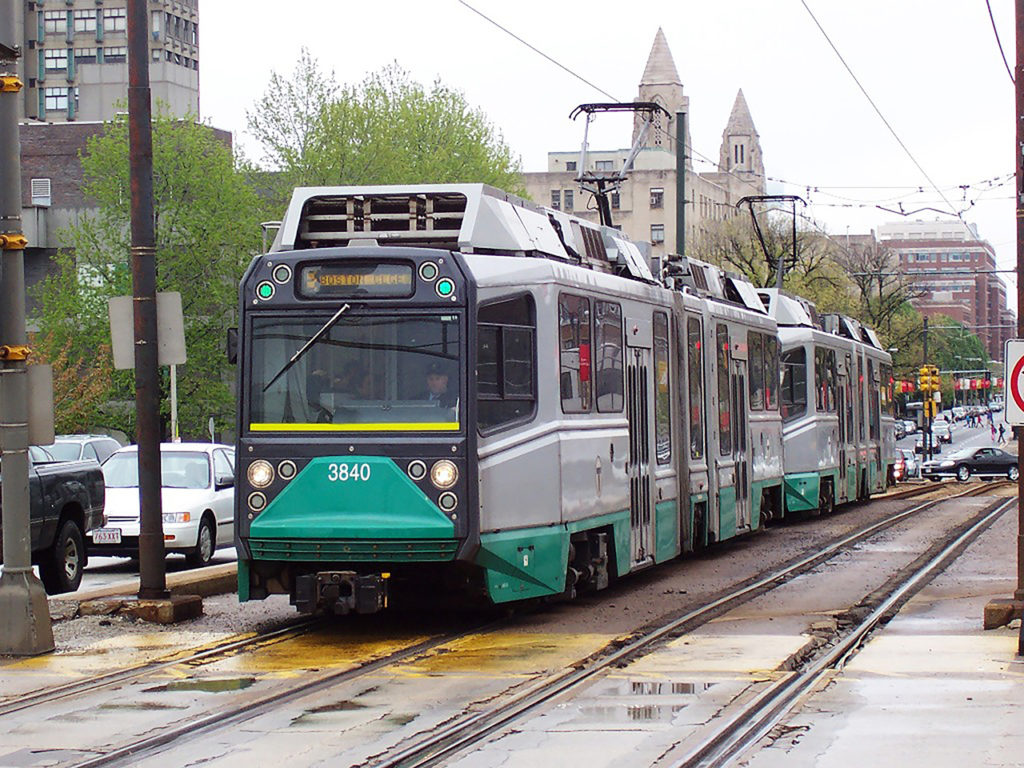
MBTA Green Line B train of CAF Type 9 LRVs bound for Boston College, stopped at a red light in the median of Commonwealth Avenue at Carlton Street, between the BU Central and BU West stops. Adam F. Moreira/Wikimedia Commons
Railway Age and Railway Track & Structures presented, live, the annual Light Rail Conference in Boston, November 16-17.
Commentary: Origin of the Term “Light Rail”
By Robert W. Rynerson, Oregon Public Utilities Commission Consultant 1973; Edmonton Transit Service Planner 1976-1980 and Marketing Officer 1980-1984
The Light Railway Transport League was formed in England in 1937 and published a useful magazine under various names that was circulated worldwide. My understanding is that a Light Railway was a legal category that did not require parliamentary assent. That avoided some of the political battles that occurred in developing railways.
I first heard the term in a 1970 Cold War setting in Berlin from Ray Crees, an officer of the League and employee of British European Airways. I was in a U.S. Army intelligence job and so we had to be careful that we did not alarm officials on either side of the Wall with our subversive talk about trams. In April 1970, I visited him in a London pub that was decorated with tram memorabilia and we talked Light Rail.
In 1972, a citizen group in Edmonton published a report that used the terms “Light Rapid Transit” and “LRT” and “Light Rail Rapid Transit.” Their references gave credit to the Light Railway Transport League’s publications. One of their sources was a 1971 paper by Robert Clark, formerly of Glasgow, who was a League member. He was later in charge of Service Planning at Edmonton Transit and then Operations Manager of the new Light Rail Division. I cribbed from the well-researched citizen report extensively for the 1973 Oregon Public Utilities Commission study titled LIGHT RAIL TRANSIT Portland Area Rail Corridor Study. It created a sensation at the time, because OPUC was not part of the highway-dominated metropolitan transportation planning fraternity. Portland from that point continued to use the initials LRT.
Other citations from that era include the USDOT’s Standard Light Rail Vehicle (SLRV), including a September 1972 article in Modern Railroads [which Simmons-Boardman Publishing acquired in 1991 and merged into Railway Age] headlined “National Light Rail Transit Car to Be Built.”
In 1977, the Edmonton City Commissioners issued a directive that what had been known as the “Rapid Transit Project” was henceforth to be known as the “Light Rail Transit” project. When the line opened in 1978, that term was well-established. There were people who wanted to have a cooler name, but as we looked into those ideas, we learned that the name was widely recognized and there were better things to do with our time to sell transit.



